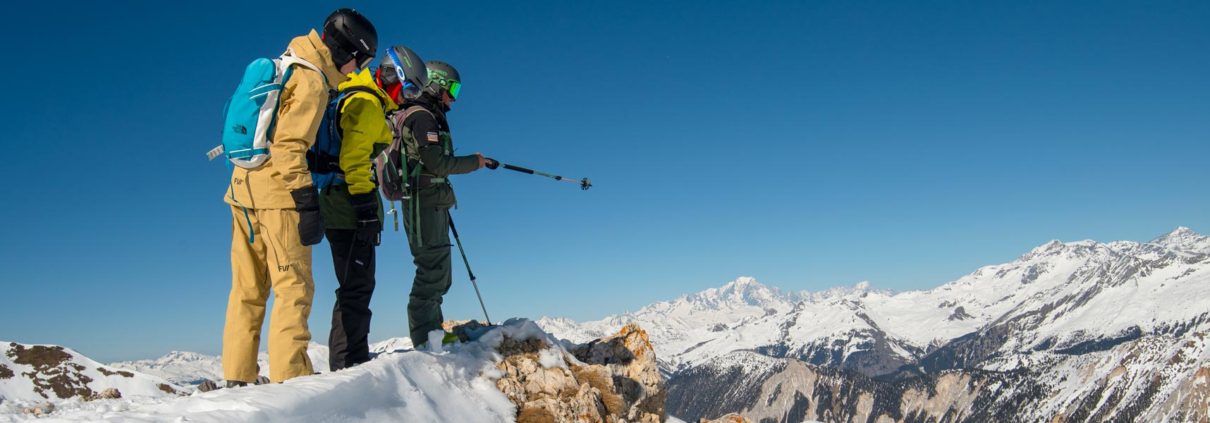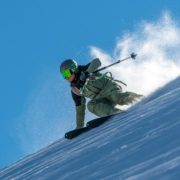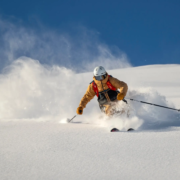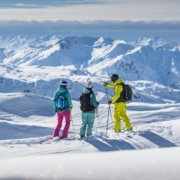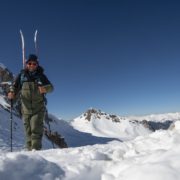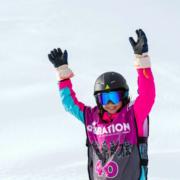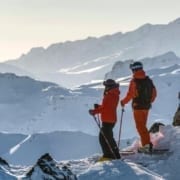So what is the difference between On-Piste and Off-Piste Skiing? Why do people ski off-piste? Why is off-piste skiing so highly celebrated amongst skiers?
Off-piste skiing
The term ‘off-piste’ is a french term which directly translates to ‘off track’. So off-piste is any terrain that sits outside of the piste markers.
This could be right at the side of the ski run, or it could be way into the backcountry if you’re ski touring. But to put it simply, skiing off-piste means: to ski away from the identified pistes.
Off-Piste Skiing should not be confused with skiing an ungroomed run. Some ski runs are deliberately not pisted/groomed to challenge you, for example, a mogul field. This does not classify them as off-piste but the experience and terrain may be similar.
The off-piste areas in a ski resort are not as widely monitored, so it is your responsibility to be prepared and safe when skiing off-piste. We list the equipment and considerations you’ll need to take below.
Off-piste skiing vs. on-piste skiing
When we refer to ‘on piste’, we are describing the ski runs that have been specifically recognised for skiing in a ski resort. They are on the map and may well have poles down either side of them to mark them.
What are other terms for off-piste skiing?
- Backcountry skiing
- Freeriding
In North America, they may not have the same expectations of off-piste skiing as we do in Europe. Off-Piste Skiing in Europe would be most similar to what they would call backcountry skiing.
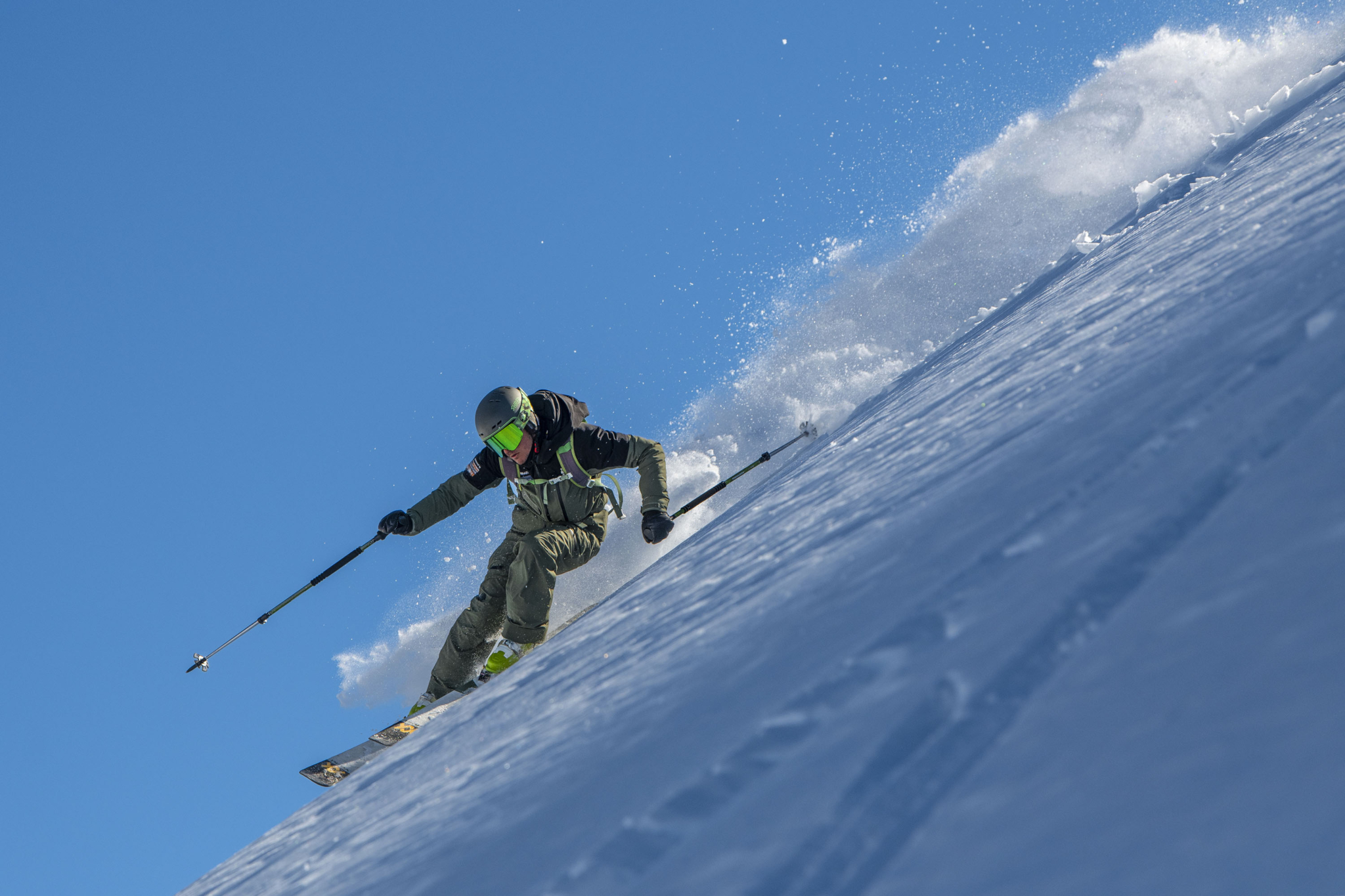
Different rules in other continents
We are based in the Alps and have been teaching off-piste courses and guiding off-piste for nearly 25 years. We operate in multiple resorts in France, Switzerland & Austria. In all of those resorts, the rules for off-piste skiing are incredibly similar.
As soon as you leave the marked runs you are considered to be responsible for your own safety and it is essential that you have a strong awareness of avalanche safety and rescue.
The rules & guides for off-piste skiing do differ from continent to continent.
Off-Piste skiing in North America
So what is the difference between backcountry skiing and off-piste skiing?
In North America, anything outside of the resort boundary is often called backcountry skiing.
Areas within the resort boundary that are not marked by piste markers, or in some cases are not groomed are likely to be referred to as off-piste.
These off-piste skiing areas are avalanche controlled and patrolled. These areas can also be sectioned off and closed completely if the Ski Patrol feel they are unsafe.
The ski patrol in North America can also limit how many off-piste skiers have access to the backcountry gates out of the resort boundary if it’s deemed not safe enough.
Whereas in Europe, the off-piste ski areas even close to and within the resort are only avalanche controlled and managed if they pose a risk to the pistes, lifts or other infrastructures such as roads or towns. Unless the entire mountain is shut they are never closed and you are left to ski them at your own risk.
An avalanche danger rating at the top of the lift stations with a flag to show how likely the risk of an avalanche is. But you can always go at your own risk, no matter the conditions. The runs are rarely gated off to the public like they are in North America.
Avalanches within the ski areas in both Europe and North America are controlled by blasting the snow to create a controlled avalanche, usually early in the morning before the lifts are open.
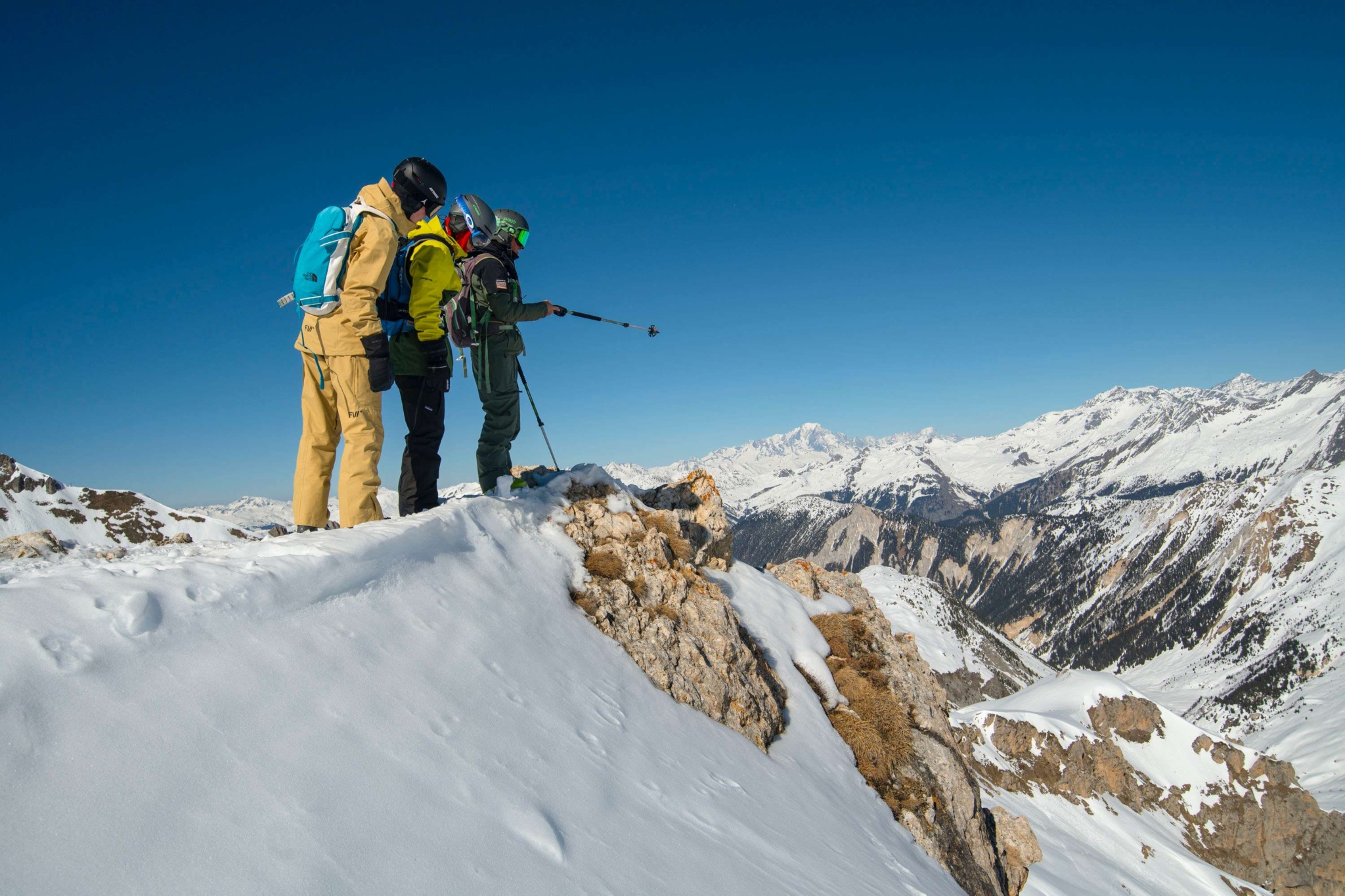
Skiing Off-Piste in Japan
In smaller Japanese ski resorts, before going off-piste, it is obligatory to sign a piece of paper declaring that you understand the risks and consequences of skiing off-piste. You must leave emergency contact details and sign that you have insurance to ski off-piste.
In Japan, it’s also common to wear a bib to declare that you intend to ski on the off-piste slopes, so you could easily be identified! When you’re finished skiing at the end of the day, you need to go back to the ski resort office and hand your bibs back. This is so that they can sign you out and mark you as safe.
Know before you go
In Europe, you are skiing off-piste at your own risk and need to ensure you:
-
- Get the gear – Always carry a transceiver, shovel, and probe (make sure you have a backpack big enough). Wear your transceiver across your body, make sure it’s switched on, and check it’s working and has a sufficient battery. We have avalanche kit bags available to borrow when you book to go with a guide through New Generation.
- Get the training – Take an avalanche class to gain knowledge which could save not only your life but your friends’ lives too.
- Get the forecast – Study the weather and look at avalanche reports. Take note of any potential avalanche problems so you can make a plan!
- Get the picture – Be aware of changing conditions, other groups and make sure no one in your group is out of their comfort zone.
- Get out of harm’s way – Ride suspect slopes one at a time, be smart and don’t stop in an area exposed to avalanches.
We’d also advise booking a guide or instructor to show you where to go. The mountains can be an extremely dangerous place to play, and if you don’t have the knowledge to stay safe, you can put your life, or friend’s life in danger.
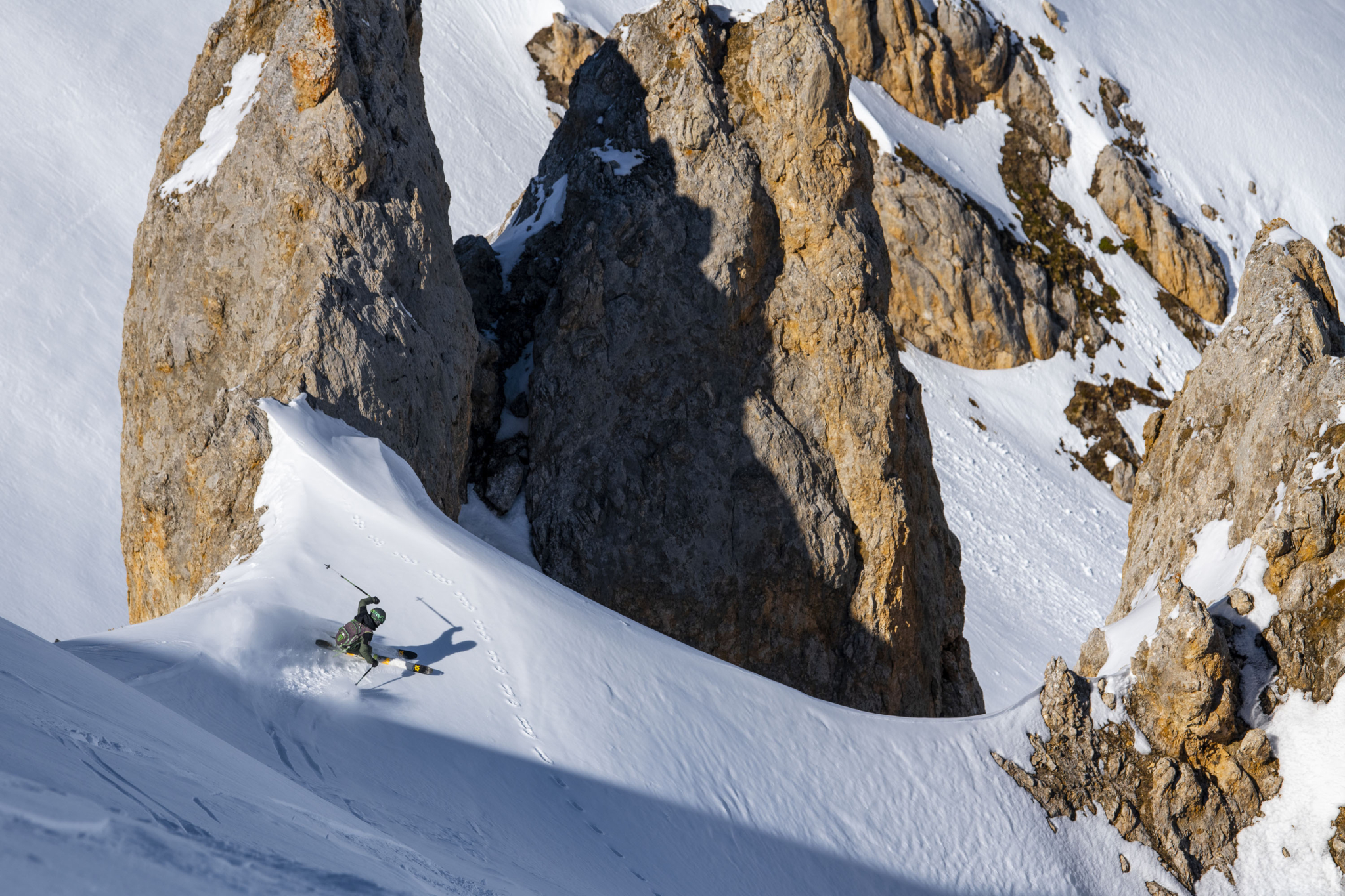
Ski Touring adventures in Verbier
Off-Piste Skiing Courses
We run specific off-piste and avalanche safety training sessions so if you’d like to gain confidence, learn about the best places to ski safely and how to read the weather.
These courses are available to both skiers and snowboarders, and we have different sessions depending on your experience. We also run experienced ski touring courses where we explore away from the marked runs and further into the backcountry, without the need for lift access.
Start by finding your off-piste ski level
What equipment & knowledge do you need to ski off-piste?
To ski off-piste safely, you not only need avalanche equipment, but you need to be knowledgeable about how to stay safe in the mountains.
Knowing which slopes are safe to ski on is very important. The aspect and steepness of the slope can make choosing where to ski difficult. If you see tracks going in, it doesn’t necessarily deem the slope safe.
Read more on the Know Before You Go website.
Why do people ski off-piste?
People ski off-piste because it’s fun! The thrill and adrenaline rush of carving your own lines in powdery fresh snow is a priceless feeling. The float and bounce of the snow and the freedom of only your group in sight. You feel like you’re at enjoying the mountains in their purest form.
There is also so much to explore, for example, the ski resorts only cover a certain percentage of the mountains. There are plenty of marked ski touring routes on the maps here in Europe, that you can discover by following the blue lines.
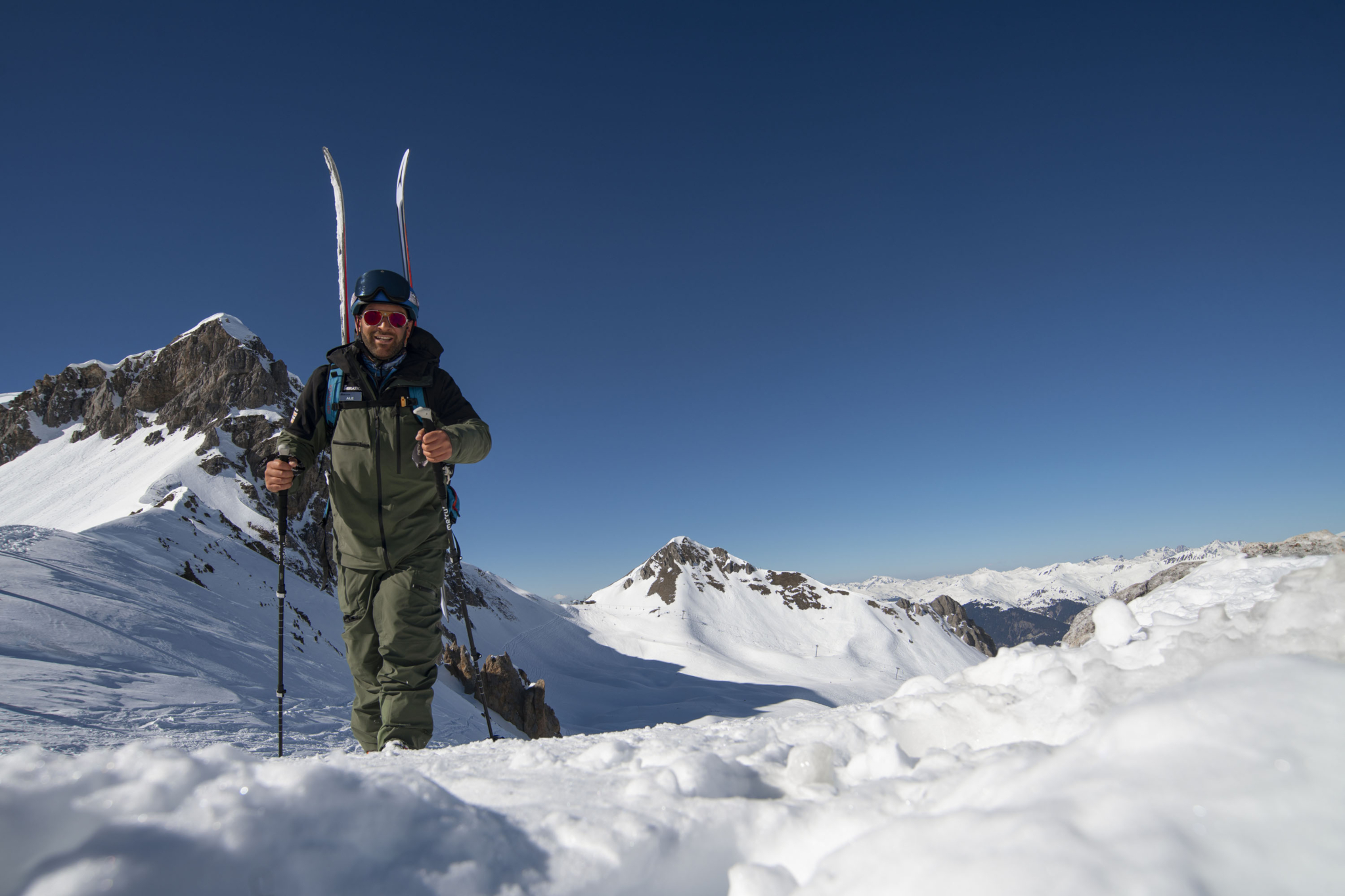
Discover the best places to ski off-piste in St Anton.
Is skiing off-piste dangerous?
Skiing off-piste can be dangerous. But it’s all about being prepared, knowing the conditions and making good decisions. Remember that the gear you carry helps you have a safer and more fun day – but it does not guarantee your safety.
Luckily, we’ve been skiing in the Alps for the past 25 years and have gained a lot of knowledge about the best places to ski off-piste in the world.
Val d’Isere, without doubt, has to be one of the best places to go skiing for the more advanced, thrill-seeking mountain maniacs. Having the second largest ski area in the French Alps with over 300km to explore you can very quickly get yourself into places it seems like no one has ever been before and embark on a journey into the wild.
Discover our favourite ski adventures in Val d’Isère
How do you ski off-piste for beginners?
If you haven’t nailed the basics, we don’t recommend venturing away from the pistes just yet. If you want to improve your technical skiing skills, then we run Technical Clinics, which might be of interest to you.
Our ski technique coaching clinics are designed as a perfect way to gain individual tips and one-on-one attention. With a larger focus on technical skills, drills and building up your tool base for skiing all over the mountain.
We offer 5hr clinics split over two 2.5hr sessions on Tuesday and Thursday. Perfect to practice what you’ve learned in between sessions, whilst giving you more time to ski with family and friends. Our clinics have a maximum of 6 people per group, so you’ll receive plenty of individualised tips and one-on-one attention.
If you’d prefer to start learning more about mountain safety and off-piste skiing now, you can check out the KBYG website, (Know Before You Go). They have free online training to help you stay out of trouble when venturing away from the marked trail on the mountain.
Be safe and have fun out there. If you need any guidance or assistance once you’re in resort, please chat to one of our team. We can recommend places to go or book you into an off-piste session.

